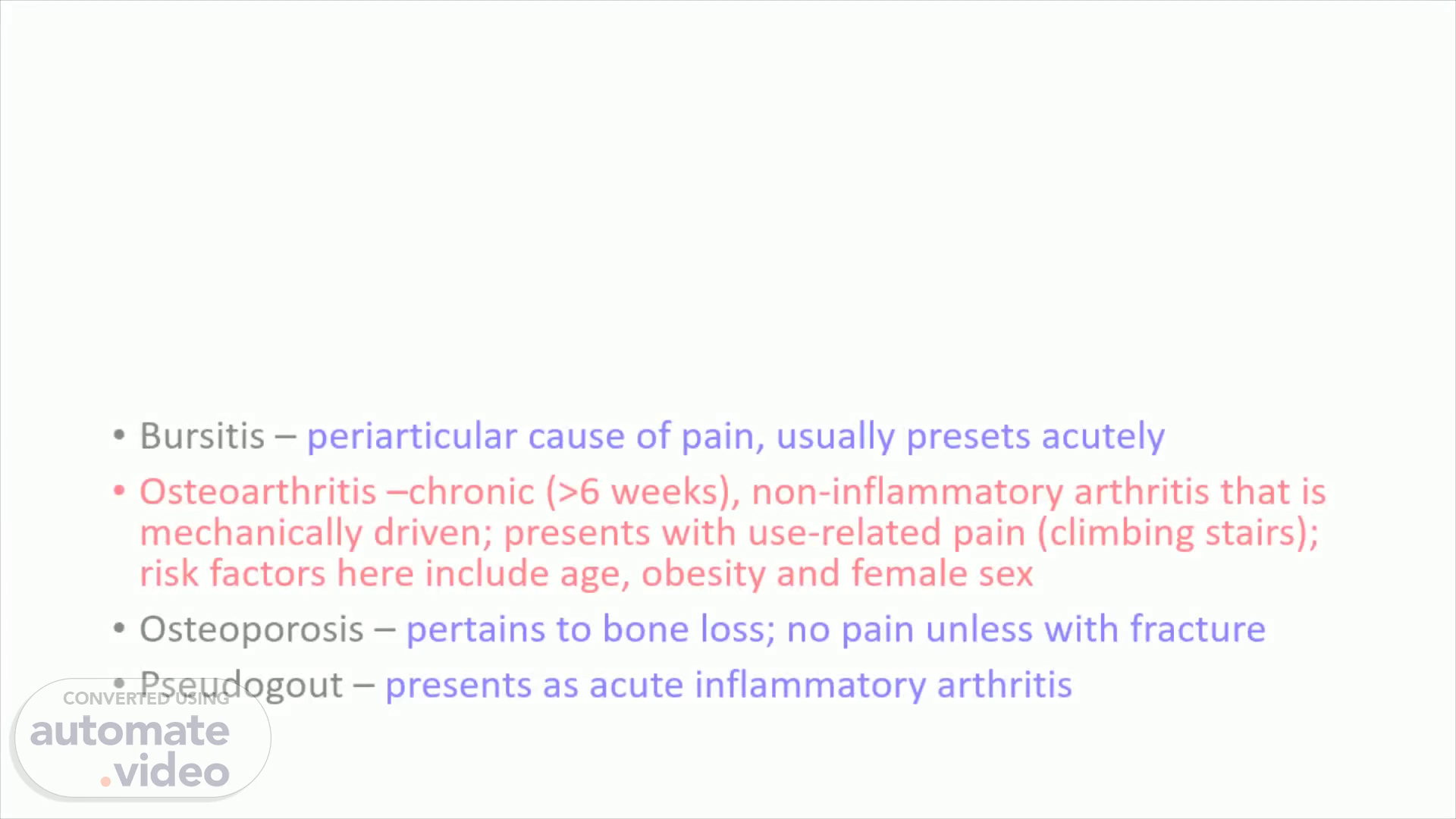
Page 1 (0s)
[Audio] A 65/F, obese, has had intermittent knee pains with for the past 5 years, associated with climbing stairs. What is the most likely cause of pain? Osteoarthritis –chronic (> 6 weeks), non-inflammatory arthritis that is mechanically driven; presents with use-related pain ( climbing stairs); risk factors here include age, obesity and female sex Bursitis – periarticular cause of pain, usually presets acutely Osteoporosis – pertains to bone loss; no pain unless with fracture Pseudogout – presents as acute inflammatory arthritis.
Page 2 (43s)
[Audio] A 66/ F came in for acute-onset left knee pain and swelling after replanting trees 5 days prior. On PE, the knee was warm and ballotable, with limitation of motion. What would be the most appropriate treatment for her case? This is an ACUTE, MONOARTHRITIS presenting with EFFUSION, most likely from an osteoarthritis flare. The most appropriate management would be an intraarticular injection..
Page 3 (1m 13s)
[Audio] A 47F housewife complains of tolerable knee pains when doing housework. PE reveals fine knee crepitations with no warmth and effusion. What is the appropriate management of her case? Reassurance and activity modification Case describes osteoarthritis with no active inflammation and only intermittent, tolerable pain. Mainstay of treatment would be non-pharmacologic: avoding painful activities that overload the joint..
Page 4 (1m 46s)
[Audio] Which is a correct statement about the laboratory features of RA? Anti-CCP has the most value in predicting worse outcomes..
Page 5 (2m 5s)
[Audio] Which feature of synovial fluid makes an acute bacterial arthritis likely? Gram positive cocci on smear-the only option that definitely confirms the presence of a microbe in the joint.
Page 6 (2m 19s)
[Audio] What is the most common manifestation of CNS lupus? Cognitive dysfunction Other manifestation includes Mood disorder, depression, headache, seizures, neuropathy.
Page 7 (2m 40s)
[Audio] A 22/ F presents with malar rash, arthritis and +4 proteinuria. She is ANA positive. What antibodies can be used to monitor disease activity in this patient? Anti-DsDNA-the only the one that is correlated with disease activity Anti Ro and Anti La– associated with decreased risk for nephritis Aniti Sm – no definite clinical correlations.
Page 8 (3m 29s)
[Audio] What is the outstanding feature of the pathogenesis of scleroderma? Over-production and accumulation of collagen – which results to think and indurated skin, characteristic of the disease.
Page 9 (3m 43s)
[Audio] A 26/ F with SLE presents with a urinalysis that showed +3 protein, RBC 30- 40, WBC 25- 30, +2 RBC casts, +2 hyaline, coarse and granular casts. What is the next recommended procedure for this patient? The above patient has findings consistent with active lupus nephritis , which should immediately be classified through a kidney biopsy to guide the next step in management..
Page 10 (4m 14s)
[Audio] In a patient with scleroderma whose skin thickening is found only distal to the MCP joints, how many of the minor criteria must be met to confirm the diagnosis? Two of three.